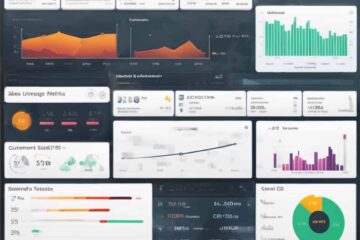In the fast-paced world of sales, having the right tools at your fingertips can make all the difference between closing a deal and missing an opportunity.
Beest.app is revolutionizing the way sales teams operate, providing a mobile and tablet-friendly platform designed to enhance efficiency and drive sales success.
If you haven’t yet integrated this sales management software into your sales strategy, you might be missing out on game-changing features that could transform your sales process.
Beest.app: Mobile and Tab-Friendly Sales Management Software
Beest.app is engineered to cater to the dynamic needs of today’s sales professionals.
As a mobile and tablet-friendly sales management software, it provides unparalleled convenience and flexibility, allowing you to manage your sales operations from anywhere. This means that whether you are in the office, on the road, or meeting clients, you can access all the powerful tools Beest.app offers.
Its cross-platform compatibility ensures seamless functionality across iOS, Android, and web platforms. This level of accessibility means that sales professionals are no longer tied to their desks and can maintain productivity no matter where they are.
By eliminating the need for complex IT setups, Beest simplifies the onboarding process and allows teams to dive straight into optimizing their sales strategies.
Moreover, the intuitive design and user-friendly interface of Beest.app make it an invaluable tool for sales teams. It ensures that even those who are not particularly tech-savvy can easily navigate and utilize its features.
This accessibility translates into minimal downtime and a quick learning curve, allowing sales teams to focus on what they do best—selling.
The ability to operate seamlessly across various devices also means that data is consistently synchronized in real-time, providing accurate and up-to-date information at your fingertips.
This real-time data access is crucial for making informed decisions, tracking progress, and adjusting strategies on the fly, thereby enhancing overall sales performance.
With Beest.app, sales teams are empowered with a robust, mobile-friendly solution that supports their need for agility and efficiency in an increasingly fast-paced market.
Key Features for Enhancing Sales
Beest.app is packed with powerful features designed to enhance sales efficiency and effectiveness.
From on-the-go operations to insightful dashboards, these tools ensure that your sales team can operate seamlessly and make data-driven decisions anywhere, anytime.
1. On-the-Go Operations
Beest.app’s on-the-go operations allow sales teams to maintain full functionality from any location. With real-time synchronization, data stays updated across all devices, ensuring seamless operations and universal access to all features.
The ability to work effectively from anywhere is crucial for maintaining productivity and meeting sales targets. This feature ensures that sales leaders can manage their teams and tasks efficiently, even when they’re not in the office.
Let’s explore the key functions of Beest’s on-the-go operations that make it a game-changer for sales teams.
- Cross-Platform Compatibility: Operate seamlessly on iOS, Android, and web platforms.
- Cloud-Based Flexibility: No complex IT setup; instant access and action.
- Real-Time Synchronization: Stay updated with the latest information across all devices.
- Universal Access: Full access to all functionalities, anytime, anywhere.
- Streamlined Transition: Easily transition to digital efficiency with an intuitive platform.
- Enhanced Productivity: Maintain productivity outside the office with all necessary tools.
- Data Security: Ensure secure data handling and synchronization on the go.
Maximize the benefits of on-the-go operations by ensuring all team members are trained on cross-platform use. Regularly sync data to prevent any discrepancies and maintain up-to-date information across all devices.
2. Swift Signatures
This feature allows you to finalize deals quickly and securely from any location using your mobile device. This mobile signing capability reduces the time and errors associated with physical paperwork, ensuring accurate data collection and enhanced transaction security.
Swift Signatures are essential for maintaining sales momentum and reducing the time to close deals. By streamlining the signing process, this feature enhances efficiency and ensures that sales agreements are executed accurately and securely.
Here are its key functions that contribute to faster and more secure deal closures.
- Mobile Signing Capability: Finalize deals quickly and securely from any mobile device.
- Accurate Data Collection: Capture essential details accurately during transactions.
- Enhanced Transaction Security: Securely process every deal, ensuring data protection.
- Streamlined Deal Closures: Close deals faster without physical paperwork.
- Error Reduction: Minimize data entry errors with precise data collection.
- Increased Sales Momentum: Maintain sales momentum by reducing deal closure time.
- Customer Trust: Enhance trust with secure and efficient transaction processing.
Ensure all team members are familiar with using the mobile signing feature to expedite deal closures. Regularly review and update security protocols to maintain the highest level of data protection and customer trust.

3. Insights at Your Fingertips
Beest provides intuitive dashboards that transform complex data into clear, actionable insights, helping you make informed decisions. With customizable analytics, you can highlight the most crucial sales data directly from your mobile device, ensuring real-time access to vital information.
Having immediate access to insightful data is essential for driving effective sales strategies and making informed decisions. This feature ensures that sales teams are always equipped with up-to-date information, allowing them to adapt quickly and maintain a competitive edge.
Let’s delve into the key functions of Beest.app’s insightful dashboards that facilitate smarter sales decisions.
- Intuitive Dashboards: Transform complex data into clear, actionable insights.
- Customizable Analytics: Highlight crucial sales data with drag-and-drop tools.
- Real-Time Insights: Access up-to-the-minute data for informed decision-making.
- Mobile Accessibility: View and analyze data from anywhere, on any device.
- Data-Driven Decisions: Use analytics to drive your sales strategy forward.
- User-Friendly Interface: Easily navigate and utilize the dashboard features.
- Comprehensive Reporting: Generate detailed reports to track sales performance.
Regularly customize and update your dashboards to focus on the most relevant sales metrics. Encourage your team to use real-time data for making strategic decisions, ensuring everyone is aligned and informed.
4. Effortless Engagement
Beest.app simplifies the management and participation in sales campaigns with direct access from your mobile or tablet. This feature allows you to launch, monitor, and fine-tune your sales campaigns easily, ensuring effective engagement with your target audience.
Effortless engagement is crucial for maintaining high conversion rates and optimizing campaign performance. By enabling personalized outreach and real-time tracking, this feature ensures that sales teams can connect with prospects effectively and adjust strategies quickly.
Let’s explore the key functions of this feature that enhance campaign management.
- Direct Campaign Access: Manage campaigns directly from your mobile or tablet.
- Dynamic Campaign Tools: Launch and fine-tune campaigns with comprehensive tools.
- Personalized Outreach: Customize campaigns to speak directly to your audience.
- Real-Time Tracking: Monitor campaign performance and make quick adjustments.
- Increased Engagement: Engage effectively with your target audience.
- Boosted Conversion Rates: Enhance conversion rates with targeted outreach.
- Mobile Convenience: Manage campaigns on the go for maximum flexibility.
Regularly review and adjust your campaigns based on real-time data to ensure they remain effective. Utilize the personalized outreach tools to tailor your messages and maximize engagement with your audience.
Integrating Beest.app with Your Sales Strategy
Ensure your team is well-trained and regularly uses the app’s features to maintain productivity and stay ahead in the competitive sales landscape. Here’s how to efficiently integrate Beest sales management software with your sales strategies.
- Leverage Mobile Features: Ensure your team uses the mobile capabilities for on-the-go operations.
- Use Swift Signatures: Speed up deal closures by enabling mobile signing for all agreements.
- Customize Dashboards: Tailor your dashboards to highlight the most critical sales data.
- Real-Time Data Access: Regularly sync your devices to ensure data is always up-to-date.
- Personalize Campaigns: Use the personalized outreach tools to target specific audience segments.
- Monitor Campaign Performance: Utilize real-time tracking to adjust and optimize campaigns quickly.
- Train Your Team: Provide comprehensive training on Beest.app’s features for maximum utilization.
- Set Up Alerts: Configure alerts for important updates and actions within the app.
- Analyze Insights: Regularly review analytics to inform and adjust your sales strategy.
- Secure Your Data: Ensure all data entered and stored in Beest.app is protected and secure.
By following these tips, you can fully integrate Beest.app into your sales strategy, enhancing efficiency and driving better results.

Final Thoughts | Transform Your Sales Success with Beest.app
Beest.app delivers a comprehensive suite of tools tailored to enhance your sales strategy and boost productivity.
With its mobile and tablet-friendly solutions, your sales team can work efficiently from any location, ensuring seamless performance on the go. This platform addresses common challenges faced by sales teams, such as maintaining productivity outside the office and speeding up deal closures.
By integrating Beest.app into your sales strategy, you can ensure your team stays ahead of the competition with data-driven decisions and personalized outreach. Don’t miss out on the opportunity to transform your sales success with Beest.app.
Invest in Beest.app field sales management software today and unlock your sales potential.
Frequently Asked Questions
What platforms does Beest.app support?
Beest.app is compatible with iOS, Android, and web platforms, ensuring seamless operation across all your devices.
How does Beest.app enhance data security during transactions?
Its Swift Signatures feature ensures secure processing of deals with accurate data collection, reducing the risk of errors and enhancing customer trust.
Can I access real-time data with Beest.app?
Yes, Beest provides real-time synchronization, keeping your data updated across all devices and enabling you to make informed decisions on the go.
How does Beest.app assist in managing sales campaigns?
It offers direct campaign access, dynamic tools for customization, real-time tracking, and personalized outreach capabilities, making it easy to manage and participate in campaigns from your mobile device.
Is Beest.app suitable for remote sales teams?
Absolutely. Beest is designed to empower sales teams with full functionality and mobility, allowing them to maintain productivity and efficiency from any location.























